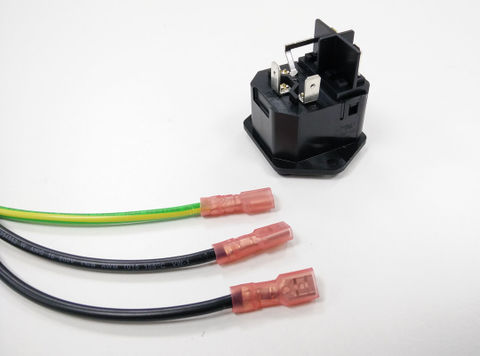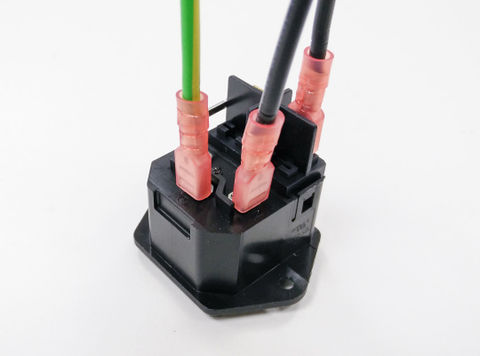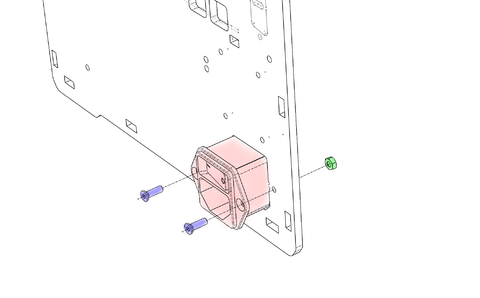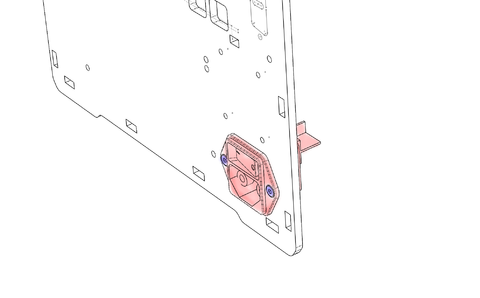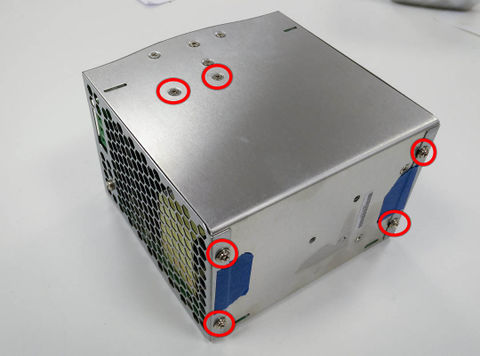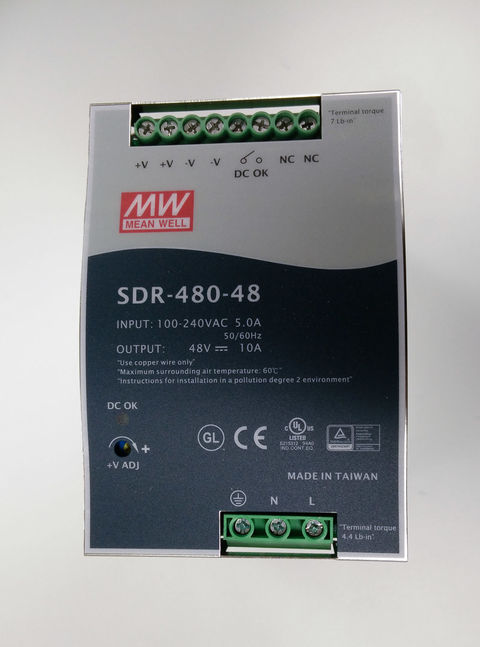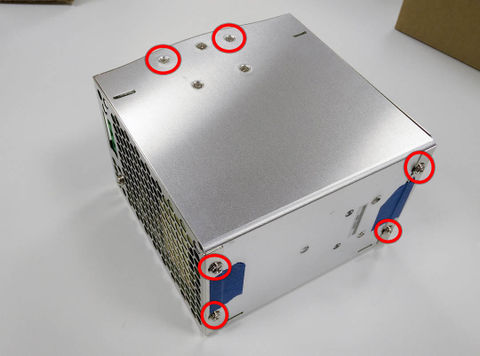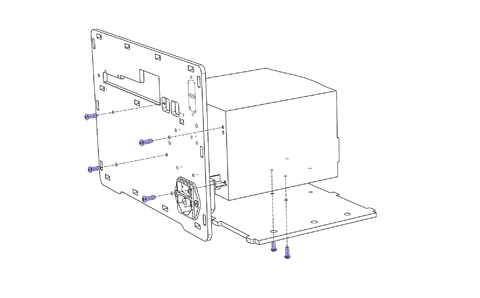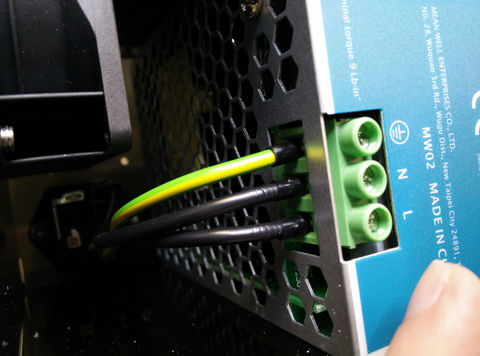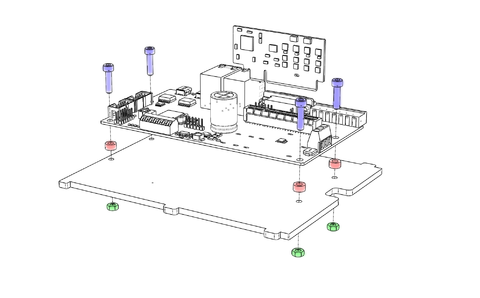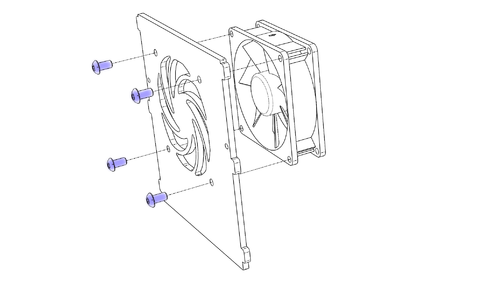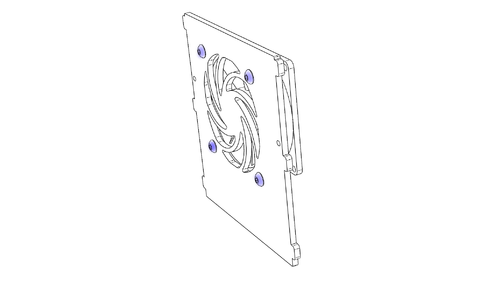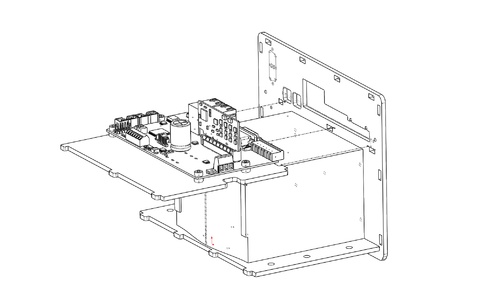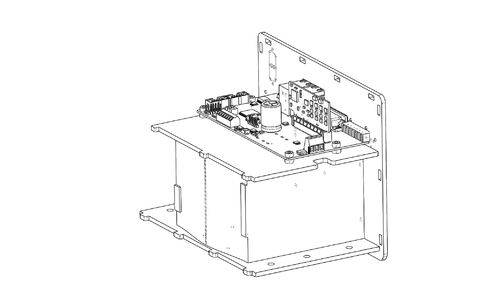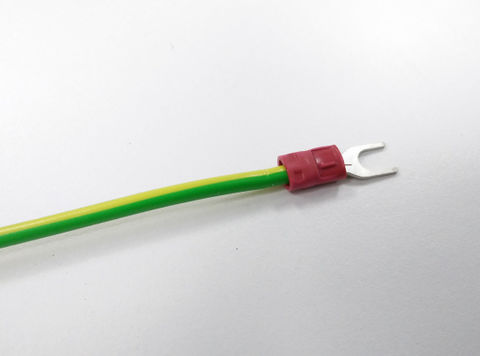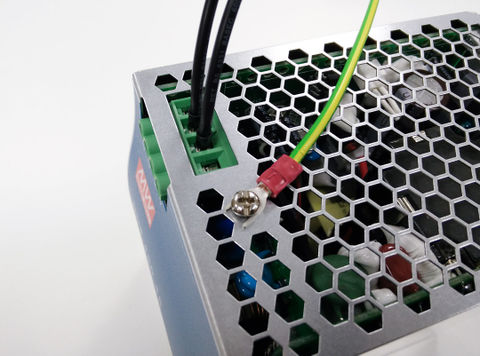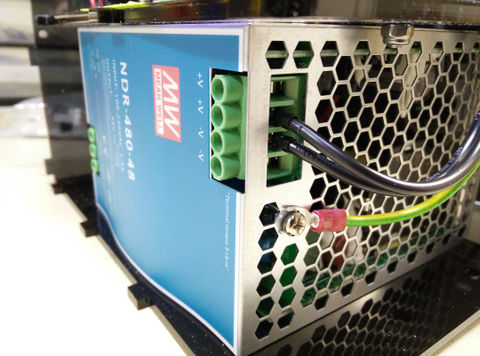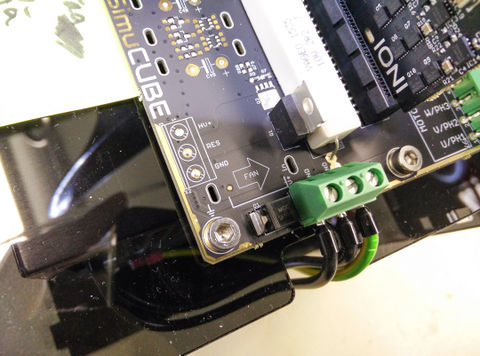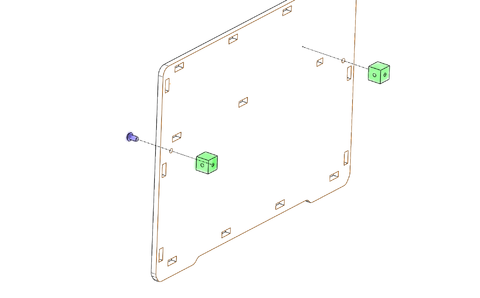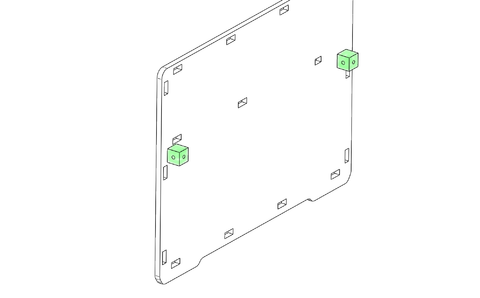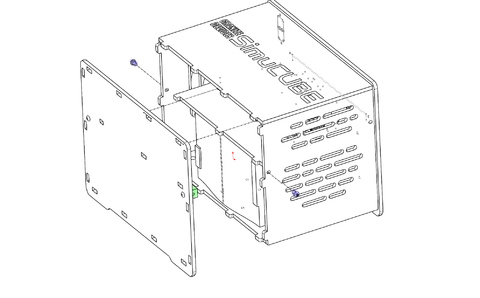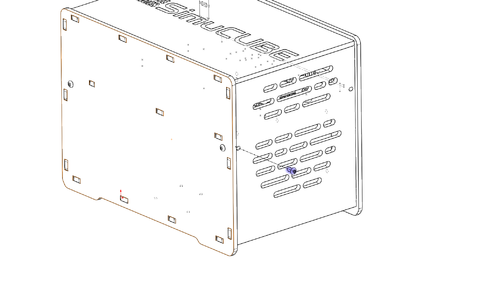Difference between revisions of "Assembling SimuCUBE 480W/720W kit"
| [checked revision] | [checked revision] |
(→Tools and parts needed) (Tag: VisualEditor) |
|||
| Line 11: | Line 11: | ||
====== Parts (included in the full kit) ====== | ====== Parts (included in the full kit) ====== | ||
| − | * SimuCUBE + IONI drive | + | * 1 pc SimuCUBE + IONI drive |
| − | * 7 acrylic pieces for the case | + | * 7 pcs acrylic pieces for the case |
| − | * Meanwell NDR-480 or SDR-480 power supply | + | * 1 pcs Meanwell NDR-480 or SDR-480 power supply |
| − | * | + | * 4 pcs M3x6 button head screw |
| − | * | + | * 6 pcs M3x10 button head screw |
| − | * | + | * 2 pcs M3x10 countersunk screw |
| − | * | + | * 4 pcs M4x16 socket screw |
| − | * | + | * 4 pcs M5x10 button head screw |
| − | * | + | * 2 pcs M3 locking nut |
| − | * | + | * 4 pcs M4 locking nut |
| − | * | + | * 2 pcs threaded 10mm brass cubes |
| − | * Schurter DC11.00001.003 IEC power socket ({{farnell|1207680}}, {{digikey|486-1963-ND}}) | + | * 1 pc Schurter DC11.00001.003 IEC power socket ({{farnell|1207680}}, {{digikey|486-1963-ND}}) |
| − | * 80x80x25mm cooling fan capable of starting at 5V | + | * 1 pc 80x80x25mm cooling fan capable of starting at 5V |
| − | * 1.5 mm^2 wire for electrical connections | + | * 60 cm of 1.5 mm^2 wire for electrical connections |
| − | * 1.5 mm^2 yellow-green wire for | + | * 30 cm of 1.5 mm^2 yellow-green wire for protective earthing |
====== Optional ====== | ====== Optional ====== | ||
| Line 39: | Line 39: | ||
[[File:simucube_acrylic_spacers_common.png|thumbnail|480px|none]] | [[File:simucube_acrylic_spacers_common.png|thumbnail|480px|none]] | ||
| − | 2) Attach grounding and mains wires to the power connector by either soldering them or by using the crimp terminals. If you don't have an access to proper crimp pliers for these type of terminals, then soldering is more preferred method to prevent wires from getting loose. | + | 2) Attach grounding and mains wires to the power connector by either soldering them or by using the crimp terminals. If you don't have an access to proper crimp pliers for these type of terminals, then soldering is more preferred method to prevent wires from getting loose. Cut wires approx 14 cm long (total length with crimp connectors becomes approx 14-15 cm). |
[[File:20160613-DSC_3271.jpg|thumbnail|Mains power socket|480px|none]] | [[File:20160613-DSC_3271.jpg|thumbnail|Mains power socket|480px|none]] | ||
| Line 79: | Line 79: | ||
5) Attach the power supply to the back plate with four M3x10 button head screws (be careful, do not tighten too much!). Slide the bottom plate below the power supply (use the two screwless holes on the bottom of the PSU as a reference to align the bottom) and to the slots on the back plate and screw two M3x10 button head screws from the bottom. | 5) Attach the power supply to the back plate with four M3x10 button head screws (be careful, do not tighten too much!). Slide the bottom plate below the power supply (use the two screwless holes on the bottom of the PSU as a reference to align the bottom) and to the slots on the back plate and screw two M3x10 button head screws from the bottom. | ||
| − | {{Warning|Acrylic is very brittle material and breaks easily. Don't use much force when inserting or removing parts together (max 2 kg static pressure to push tenons together). If part are tight to fit together (which is can happen due to material tolerances), use a small file to loosen the tenons (round the corners of male part and enlarge the hole of female counterpiece).}} | + | {{Warning|Acrylic is very brittle material and breaks easily. Don't use much force when inserting or removing parts together (max 2 kg static pressure to push tenons together). If part are tight to fit together (which is can happen due to material tolerances), use a small file to loosen the tenons (round the corners of male part and/or enlarge the hole of female counterpiece).}} |
{| class="wikitable" | {| class="wikitable" | ||
| Line 88: | Line 88: | ||
{{Tip|If you need to disassemble any acrylic joints, use a small flat headed screw driver to loosen each tenon progressively to separate panels. Pulling panel with force may break the acrylic panel.}}<br /> | {{Tip|If you need to disassemble any acrylic joints, use a small flat headed screw driver to loosen each tenon progressively to separate panels. Pulling panel with force may break the acrylic panel.}}<br /> | ||
| − | 6) Connect grounding and mains wires to the power supply's screw terminal. | + | 6) Connect grounding and mains wires to the power supply's screw terminal. Cut wires approx 13 cm long (total length with crimp ferrules becomes approx 13 cm). |
{| class="wikitable" | {| class="wikitable" | ||
| Line 115: | Line 115: | ||
|} | |} | ||
| − | 10) Attach positive (+48VDC), negative and grounding wires between the power supply output and motherboard terminals. Crimp the fork terminal on the other end of the grounding cable and do a pull test to make sure it is crimped well. | + | 10) Attach positive (+48VDC), negative and grounding wires between the power supply output and motherboard terminals. Crimp the fork terminal on the other end of the grounding cable and do a pull test to make sure it is crimped well. Cut the earthing wire approx 13 cm long (total length with crimp connectors becomes approx 14 cm). |
{| class="wikitable" | {| class="wikitable" | ||
Revision as of 09:41, 27 June 2016
This guide gives instructions of assembling a Granite Devices SimuCUBE kit for 480W/720W power supply options. The kit of needed parts is available through Granite Devices web shop and also has been offered through SimuCUBE indiegogo campaign.
Contents
Tools and parts needed
Tools
- Metric hex keys (2.5 + 3 + 4 mm)
- Suitable wrench or pliers to hold M3 and M4 nuts
- Small file, might be needed to touch off some of the laser cut tenons to ease up the assembly and prevent the use of excessive force
- Suitable crimpers for wire terminals or a soldering iron
Parts (included in the full kit)
- 1 pc SimuCUBE + IONI drive
- 7 pcs acrylic pieces for the case
- 1 pcs Meanwell NDR-480 or SDR-480 power supply
- 4 pcs M3x6 button head screw
- 6 pcs M3x10 button head screw
- 2 pcs M3x10 countersunk screw
- 4 pcs M4x16 socket screw
- 4 pcs M5x10 button head screw
- 2 pcs M3 locking nut
- 4 pcs M4 locking nut
- 2 pcs threaded 10mm brass cubes
- 1 pc Schurter DC11.00001.003 IEC power socket (Farnell 1207680
- 1 pc 80x80x25mm cooling fan capable of starting at 5V
- 60 cm of 1.5 mm^2 wire for electrical connections
- 30 cm of 1.5 mm^2 yellow-green wire for protective earthing
Optional
- Gloves to prevent fingerprints on the acrylic parts while assembling the system
- Wire end ferrules
- Heat shrink tubing
Assembly
| Assembly requires wiring of mains voltages that can be lethal. Consult an electrician if you are unsure of your skills. Everything published here is provided as-is without any warranty, you do everything on your on responsibility and Granite Devices Inc. cannot be held responsible if you harm yourself, others or burn your house down because of miswiring. |
1) Cut off the round parts from the acrylic back plate and save these for later. These will be used as spacers for the SimuCUBE motherboard.
2) Attach grounding and mains wires to the power connector by either soldering them or by using the crimp terminals. If you don't have an access to proper crimp pliers for these type of terminals, then soldering is more preferred method to prevent wires from getting loose. Cut wires approx 14 cm long (total length with crimp connectors becomes approx 14-15 cm).
3) Fix the power plug to the acrylic back plate with M3x10 countersunk screws and M3 locking nuts.
4) Put the two pieces of thin tape to the power supply as in the image (helps with assembly). Unscrew the marked screws to detach the DIN rail connector and the other marked screws. Follow the instructions with the type of power supply you have (SDR-480 or NDR-480).
5) Attach the power supply to the back plate with four M3x10 button head screws (be careful, do not tighten too much!). Slide the bottom plate below the power supply (use the two screwless holes on the bottom of the PSU as a reference to align the bottom) and to the slots on the back plate and screw two M3x10 button head screws from the bottom.
| Acrylic is very brittle material and breaks easily. Don't use much force when inserting or removing parts together (max 2 kg static pressure to push tenons together). If part are tight to fit together (which is can happen due to material tolerances), use a small file to loosen the tenons (round the corners of male part and/or enlarge the hole of female counterpiece). |
| If you need to disassemble any acrylic joints, use a small flat headed screw driver to loosen each tenon progressively to separate panels. Pulling panel with force may break the acrylic panel. |
6) Connect grounding and mains wires to the power supply's screw terminal. Cut wires approx 13 cm long (total length with crimp ferrules becomes approx 13 cm).
7) Attach IONI to the SimuCUBE motherboard by pressing it to the PCI-E-type connector. Align the motherboard onto the acrylic middle piece so that the edge of the connector edge of the circuit board is flush with the main edge of the acrylic (not the three protruding parts) and the holes line up. Use the four spacers cut from the acrylic back plate, four M4x16 screws and four locking nuts.
8) Attach the 80mm fan on the acrylic side piece with four M5x10 button head screws, use the photo as a reference on which way the fan should be aligned. This configuration sucks air to the case and blows it towards the IONI and through the power supply.
9) Slide the motherboard assembly on top of the power supply and into the slots on the back of the case.
10) Attach positive (+48VDC), negative and grounding wires between the power supply output and motherboard terminals. Crimp the fork terminal on the other end of the grounding cable and do a pull test to make sure it is crimped well. Cut the earthing wire approx 13 cm long (total length with crimp connectors becomes approx 14 cm).
11) Attach the fan side plate in place and attach the fan wires to the quick terminal on the motherboard.
12) Attach the two 10mm threaded cubes to the acrylic front plate with M3x6 button head screws and align the holes as shown on the image.
13) Attach the left exhaust panel and top panel with the logo to the case and carefully wiggle the front plate in place. Screw one M3x6 button head screw from either side to the 10mm threaded cubes previously attached to the front plate.
14) Follow the SimuCUBE system user guide for usage
| Read next |





